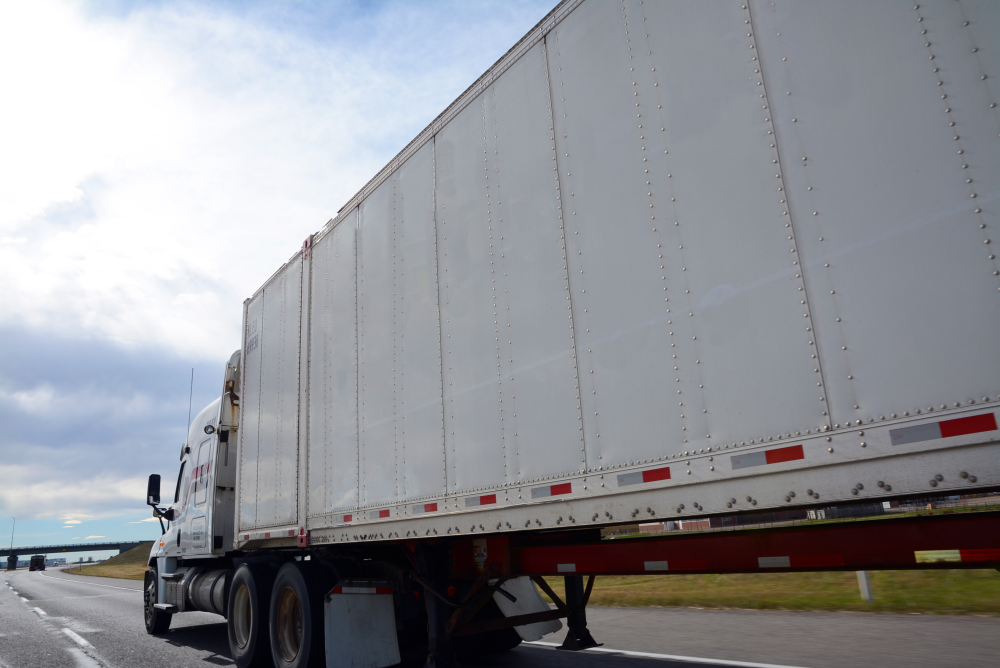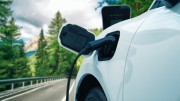As the federal government starts to prepare new regulations to accelerate adoption of zero-emission medium- and heavy-duty vehicles (MHDVs), alternative fuels — renewable natural gas, biofuels, and hydrogen — will play an increasingly large role in the decarbonization of road freight. Clean fuels will be an especially important tool during the transition period and as a means of lowering the life-cycle emissions of large, long-haul, trucks.
The MHDV sector is of particular significance in the drive to lower national emission levels. Transportation emits more greenhouse gases (GHGs) than any other sector of the Canadian economy save oil and gas production. Unlike light-duty vehicles, MHDV-generated GHGs have persisted to rise and now threaten to surpass those of passenger cars by 2030 even though MHDVs make up less than 20 per cent of all the vehicles on the road.
 As with smaller vehicles, the electrification of MHDVs is key to a clean transportation system. However, replacing internal combustion engine heavy-duty vehicles (HDVs) with battery-electric models will simply not be viable in all vehicle classes. In addition, the existing stock of fossil-powered vehicles will likely remain on the road over the next 20 to 25 years to be gradually replaced over time. In these cases, alternative fuels produced from renewable sources are essential to minimizing greenhouse gas emissions generated by the MHDV sector. Given the variety of options among low-carbon fuels, and their respective merits and drawbacks, a careful examination of each is warranted as Canada drafts climate policies that bring us closer to a zero-carbon economy.
As with smaller vehicles, the electrification of MHDVs is key to a clean transportation system. However, replacing internal combustion engine heavy-duty vehicles (HDVs) with battery-electric models will simply not be viable in all vehicle classes. In addition, the existing stock of fossil-powered vehicles will likely remain on the road over the next 20 to 25 years to be gradually replaced over time. In these cases, alternative fuels produced from renewable sources are essential to minimizing greenhouse gas emissions generated by the MHDV sector. Given the variety of options among low-carbon fuels, and their respective merits and drawbacks, a careful examination of each is warranted as Canada drafts climate policies that bring us closer to a zero-carbon economy.
The limits of electrification
While many fossil-fuel powered vehicles will remain on the road past 2030, our modelling shows that approximately 65 per cent of medium-size trucks and almost all urban delivery trucks and transit buses could be electrified within the next five years.
The electrification of heavier vehicles is a different story. Designing long-haul trucks to accommodate massive batteries remains a technical challenge especially in the case of long-distance rigs. During this period, when climate pollutants from on-road freight needs to decline but non-emitting models are not yet market-ready, alternative fuels can contribute to shrinking the carbon footprint of HDVs.
Clean fuel solutions can be divided into three pathways: (1) using biofuels to reduce the carbon intensity of diesel fuel; (2) switching to natural gas vehicles that can be fueled by renewable natural gas to minimize emissions; or 3) investing in hydrogen fuel cell vehicles. In preliminary analysis of these fuels, we find that two are viable decarbonization tools in the short-term, while one (hydrogen) could be critical to a carbon-neutral transportation future in the long term.
The short-term option: biofuels
There are two kinds of biofuels: biodiesel and renewable diesel. Biodiesel is a liquid fuel that can be blended with diesel, while renewable diesel is a synthetic fuel that is chemically indistinguishable from fossil-based diesel. Because both fuels can be used in internal combustion vehicles, there is no need to purchase a new vehicle or install charging infrastructure.
Made from organic matter — mostly canola and soybeans for biodiesel, animal fats and vegetable oils for renewable diesel — each option is less carbon intensive than pure fossil diesel although neither eliminates tailpipe emissions.
Analyzing the volume of GHGs produced over the life cycle of biofuels, Navius Research estimates that replacing petroleum diesel with either biodiesel or renewable diesel represents an approximately 90 per cent reduction in carbon intensity. However, a broad literature review reveals that assessments of the life-cycle emissions of biofuels range greatly with results hinging on how the fuel is produced and whether the source material is waste, spent matter, or crops grown specifically to be turned into fuel. Some studies report a lifecycle reduction of only 4.2 per cent of emissions relative to fossil diesel.
Another important consideration is the limitation on how much land can or should be dedicated to growing crops to produce biofuel rather than food. Given the land-use limitations, the volume of biofuel that can be feasibly produced would have a minimal impact on overall diesel fuel consumption. Research into synthetic biofuels is continuing but has yet to demonstrate that it can be done at scale.
Potential and pitfalls: Renewable natural gas
As of 2016, there were some 12,500 natural gas vehicles in Canada. Trucks that run on natural gas operate equally well on renewable natural gas (RNG) and have been proposed as a market-ready option to decarbonize the heavy-duty auto sector.
RNG is made from the biogas emitted from natural waste products found in landfills and wood and crop residue. This reduces the amount of methane that would otherwise have been emitted into the atmosphere and lowers tailpipe emissions. In heavy-duty vehicles powered by RNG, life-cycle emissions could come down by as much as 55 per cent.
The caveat is that the decarbonization benefits of RNG are diluted when RNG is distributed through natural gas systems mixing the two gases together. Studies have shown that a truck fuelled by the average mix of RNG with fossil gas would realize a fairly small 11 per cent reduction in GHG emissions. Therefore, a substantial increase in RNG production would be necessary for its decarbonization potential to be fully realised. Should RNG production levels remain low, there is the risk that natural gas infrastructure, intended for the eventual distribution of RNG, could instead become a stranded asset offering little in the way of decarbonizing the transportation system.
RNG may, however, be an optimal choice for garbage trucks that operate on natural gas and which have access to RNG sourced from landfills. In this scenario, trucks dispose waste which is subsequently cycled back in the form of renewable fuel to power up the same trucks. Several municipalities across Canada have started producing RNG directly on waste facility sites.
The long game: Hydrogen
Zero-emission vehicles — those that produce no tailpipe emissions — can be powered by either hydrogen fuel cells or batteries. Many fleet operators and stakeholders see hydrogen fuel as the most viable alternative to diesel or gas. Fuel cells are comparatively light and can charge quickly, attributes that are essential for long-haul heavy-duty trucks where weight is a high-priority consideration, and drivers do not return to a central base to charge their vehicle overnight.
A possible deterrent is that currently the production of hydrogen is generally carbon intensive, diminishing the climate benefits of eliminating tailpipe emissions. Less than one per cent of the world’s hydrogen is produced using methods that employ carbon capture or electrolysis in combination with clean electricity. Because hydrogen contains less energy per unit volume than other fuels, transporting, storing and delivering it to multiple fuelling stations is more costly on a per-gasoline-gallon equivalent.
Cleaner means of production are being developed, but we have yet to see how effectively those means can be scaled up. Currently, fuel cell trucks are limited in supply and considerably more expensive to buy relative to conventional trucks, and publicly accessible hydrogen fuelling stations are nearly non-existent.
The drive to net-zero
Due to limitations in how much agricultural land can be devoted to crops for biofuels and the climate impact of substantial changes in land use, the deployment of biodiesel and renewable diesel should be limited to remote provinces or hard-to-decarbonize vehicles such as long-haul road freight where the benefits of biofuels can be maximized.
Although RNG is not without its limitations, nevertheless the life-cycle emissions from an RNG-powered vehicle are potentially comparable to those of hydrogen fuel cell vehicles. This scenario is determined largely by two factors: first, the carbon intensity of the method employed to produce hydrogen which, more often than not, is quite high; second the ratio of RNG to diesel when mixed, where the bigger the proportion of RNG, the smaller the carbon footprint.
As more low-carbon hydrogen is produced, hydrogen fuel cells may well be a solution in the long term, if not the near-future, for hard-to-decarbonize vehicle classes where battery electrification presents persistent technological and design challenges. Other sectors where hydrogen may be the best option are petroleum refining, metal production, and long-distance aviation, all of which are difficult to decarbonize.











